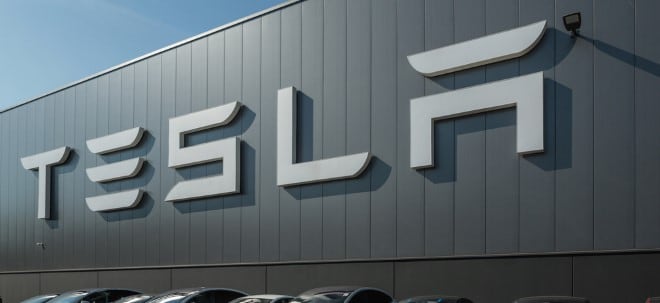Morgen gibt es Aktivität von OHB - mal sehen, was die Anleger dazu sagen werden... Hier ein brauchbarer Artikel über MTG und seine Finanzierungsschwierigkeiten. Daher also ist es darum so ruhig... Und allen, die Englisch nicht beherrschen empfehel ich den Googelübersetzer. ESA Asks Strapped Members For Billions
A sigh of relief swept the room last month at the European Space Agency’s headquarters in Paris as top ESA and industry officials watched the signing of the 19-nation organization’s largest and possibly most politically charged satellite contract.
Awarded two years ago to an industry team led by Thales Alenia Space of France and Italy and OHB Technology of Germany, the €1.26 billion ($1.8 billion) contract was hotly contested by elements of the German government, which lobbied for a larger role for EADS-Astrium’s German satellite division in developing the six Meteosat Third-Generation (MTG) spacecraft.
Under intense political pressure that threatened to undermine the integrity of its procurement process, ESA held firm, preventing the contract decision from being overturned by its largest financial contributor. The space agency did concede to boost OHB’s role in the project, while finding more work for Astrium than it would have had under the initial Thales/OHB bid.
Volker Liebig, head of ESA’s Earth-observation program, said at the contract signing, “It was hard work to arrive at this point, but it has been achieved.”
MTG is designed to operate in geostationary orbit for 20 years beginning in 2018. ESA is paying 56% of the spacecraft’s total contract value, while the European Organization for the Exploitation of Meteorological Satellites (Eumetsat) is covering the remaining 44%. Eumetsat, based in Darmstadt, Germany, will pay for 70% of the €2.4 billion MTG program as a whole.
With the MTG struggle behind it, ESA now turns its attention to the Nov. 19-21 ministerial-level meeting in Italy, where details of its forthcoming five-year budget will be hashed out. ESA will ask its member states to volunteer contributions in support of agency programs with the expectation that national industries of participating governments will receive contracts equivalent to 90% of their financial backing. Despite the promise of geographic return, however, the sovereign debt crisis in Europe now is making it difficult for governments to finance any optional programs, including Earth observation, particularly when ESA is already seeking a pile of money for a next-generation, polar-orbiting meteorological satellite system that ESA and Eumetsat would fund jointly.
Designed in a two-satellite configuration, the Eumetsat Polar System-Second Generation (EPS-SG) comprises a constellation of weather satellites carrying sounder and imaging instruments designed to succeed existing Metop spacecraft by 2020. ESA, which will finance design and development of the satellites, will seek at least €715 million from member states in November for its role in the project. But the search for money in a tight economic environment was not helped last year when the U.S. National Oceanic and Atmospheric Administration withdrew funding for the spacecraft’s Advanced Technology Microwave Sounder (ATMS) instrument, leaving ESA and Eumetsat to foot a bill that Liebig says amounts to more than €60 million.
Even if ESA approves the program in November, Eumetsat must secure financial commitments from its own 27 member governments for the estimated €2.85 billion project, as funding of its programs must be unanimously agreed upon. Eumetsat Director General Alain Ratier says he is confident that members will support the project, though drawing support for even low-level preparatory work to the tune of €41.2 million in 2012-14 has been a struggle.
“There are difficulties in certain countries, and every country has its own view of its expenditures,” Ratier says, alluding to new governments in Greece and Spain that need time to figure out how to deal with their respective debt crises. “The question is whether the time line is sufficient to get full approval in July, but we don’t think it will be a problem.”
Under pressure to begin the preparatory work this year, Ratier says he is looking at workarounds. “There are legal ways to start without having everybody on board at a given time but with the understanding that they will come,” he says.
ESA is also expected to seek €1.9 billion over five years for its fourth Earth Observation Envelope Program, which includes several satellites. Another €405 million would fund the Sentinel 5 instrument slated to fly on a Eumetsat spacecraft under the Global Monitoring for Environment and Security (GMES) program as well a series of Jason ocean altimetry satellites.
Moreover, faced with a June deadline to commit to launch the first GMES Sentinel satellite in mid-2013, ESA may store the spacecraft if the European Commission opts not to fund €5.8 billion in GMES operations in its next seven-year budget.
Liebig says the European Union’s new Danish presidency is expected to decide in May whether to include GMES among a list of programs to be negotiated within the EC’s multi-year budget. In the meantime, Liebig says ESA is willing to absorb about €2 billion in R&D costs associated with GMES and the Galileo satellite navigation system, which could lower the EC’s GMES commitment to about €3.8 billion.
Eumetsat concept |


 Thread abonnieren
Thread abonnieren



